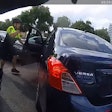The other day, while unpacking after a great hunting trip, it suddenly dawned on me that a large amount of the cool stuff I have been buying over the last year or so to make killing deer and antelope easier had remained unused in my bag in camp. Instead, I'd taken with me the same old stuff I had used for decades because it was essential on the hunt.
What I realized was most of the new items were ancillary and did not replace older pieces of equipment that had served me well in the field. This principle holds true in the law enforcement community as well. If some gizmo looks cool, but replaces nothing on your belt and yet requires you to change the way you do your job, you need to think twice, or three times, before acquiring it.
The truth is many agencies refuse officers' attempts to create "Batbelts" because it's difficult for them to control the training of officers with unique equipment, and the fact it may alter the way departmentally approved and trained equipment is worn or used. Officers have died trying to draw weapons from holsters whose attributes were altered because of a poorly placed baton or flashlight holder. Even if some new, slick, cool, fancy, science fiction-looking piece of equipment is allowed to be carried on your belt, you have to decide if it truly adds value to your belt. Does it help you win?
If it does, then you better train, train, train until using it becomes automatic. In risk management parlance this is called "unconscious competence," and it's the level to which you should train with anything on which your life depends. Bad guys point and click their guns and tend to hit without any formal training; they don't put stuff on their weapons, they don't have super fancy lights or widgets. They just have the barebones bad guy attitude and equipment. And now the FBI says after studying the career criminal, these bad guys shoot more practice rounds a year than we do.
An analysis of law enforcement deaths should make us examine the types of training and equipment that can give us the edge over our greatest risks: assailants and accidents. Read any marketing material for the coolest weapons, lights, clothes, armor, and or police toys and you will be told all the reasons you should buy this or that. But I strongly recommend you first read the reviews, not just the ads, and then ponder the following:
- Does this new item replace an essential old item? If it does, train like your life depends on it … It might.
- Does the new gizmo change the way you use other tools? Does it affect your draw or your ability to draw other items without looking?
- Is this new piece of equipment essentially a duplicate of something you already use very efficiently? If so, think long and hard about replacing the tried-and-true item.
- What do the practicing police trainers say about the new toy you want? Does this new device really give you an edge you didn't have before?
- Don't attach something to your firearm until you know what advantage it gives you, how it will change your weapon's weight and balance or change its draw, or if it will require you to alter your visual patterns. External changes, however minor, can make a big difference.
- Finally, KISS (Keep It Simple Stupid) is still the principle to bet your life on. You don't need more things; you need better skills. Often, the answer to giving yourself the advantage over an assailant is the same one your Little League or softball coach gave you when you were a child: "Practice like you want to play."
We have reached an era of wonderfully effective and task-specific equipment that can make a big tactical difference in the right environment, but the patrol officer, deputy, and trooper still need a basic tool belt, a high level of competence, faith in their skills, and a true belief in their mission to give them the edge.
I would be the last person to say, "Don't buy that toy." But if it is a tool your life might depend on, reread this article before you do.
Dave Smith is an internationally recognized law enforcement trainer and is the creator of "J.D. Buck Savage." You can follow Buck on Twitter at @thebucksavage.

















